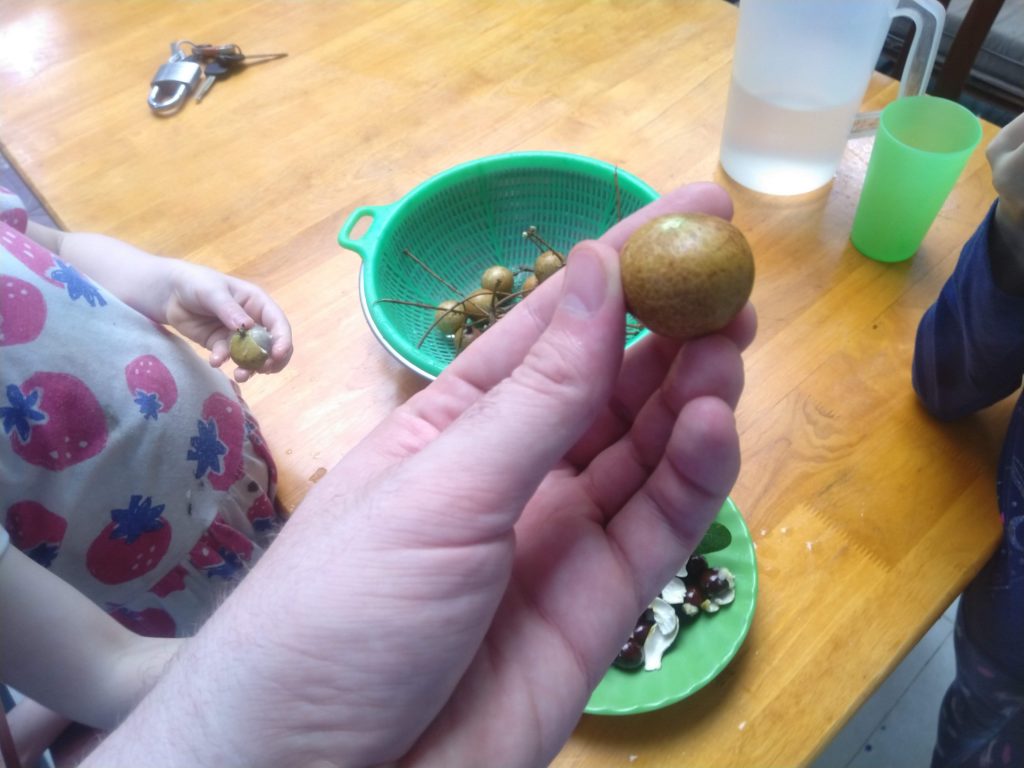មាន is the Khmer word for ‘have’. The Khmer phrase for rich person is អ្នកមាន, literally អ្នក ‘person’ មាន ‘have’. This is along the lines of ‘haves’ and ‘have nots’ in English. Longan fruit is មៀន, literally ‘fruit have’. This is the source of endless wordplay in Khmer. For instance តើអ្នកមានមានមៀនទេ, which is something like ‘does the person have have fruit have?’ Trust me, it’s hilarious in Khmer.

Anyway, Longan is a sweet and mild fruit in the same family as lychee and rambutan. I was introduced to it during my University cross-cultural in Vietnam where it was called “cat’s eye” because, reportedly, it resembles an eyeball when the outer shell is removed.

The outer shell is hard, almost like bark, and the large seed is hard and smooth, almost like lacquered wood. There’s not a lot of flesh between the seed and shell, but what is there is delicious. It has a delight mellow flavor that’s low of acidity and vaguely reminiscent of dates. In Cambodia, Longan are a seasonal fruit that are most common from June to September. They were always available around their season when I lived in the countryside and there were usually some off season longan available at the market. They seem much less common here in the city eleven years later but I’ve heard that these days most of the longan crop is exported to Thailand.
Over the last couple of months we’ve been finding scattered longan seeds and shells in our courtyard on most mornings. There are no longan trees nearby so this was a mystery. We haven’t confirmed the identity of our mystery longan eater but Crystal suspects that it’s a fruit bat (who do like to, literally, hang out in the trees near us).